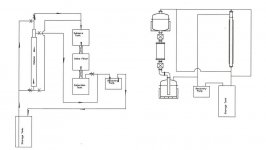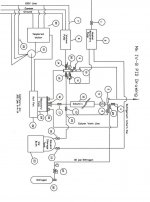okie dokie have a new issue for me and an old issue for others. I found oil residues on the lines going to the cpstr21 cleaned with alcohol and q tips but im sure there is oil in my pump now. I just do not understand how this happened since yesterday we ran the water bath at 90 and still didnt pick up oil for the first clean out run. Today we ran 80 degree bath and got a little bit sucked up and i tried feathering the dump. The mkiv we have only has 5-6 inch down tubes on a 10x12 with a 2 inch shatter platter below so its basically 10x14. I remember reading the cps tr21 forum and seeing everyone extending down tubes, but what is the best way? and importantly is there any info on taking apart the tr21 and cleaning it to prevent an entire rebuild? Or should I just turn off the pump when i dump?
and beyond all of this why would terpp extractors send us a unit with only a 5-6 inch down tube? on a 10x12? makes sense for mkiii but this is an mkiv
My suggestion would be to weld on extensions or extend it using slip on Teflon or Polypropylene tubing or hose.







